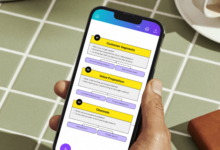Software Testing Errors Most Often Made

Software testing with humans are tasked with identifying problems in the code, but occasionally they make mistakes too. These mistakes may result in longer than expected QA runs, longer than expected QA completion times, and later than expected UAT handoff times.
These frequent mistakes occasionally have the potential to cause overlooked issues, misalignment, or misunderstandings. We can use the knowledge we receive to future initiatives and lessen the possibility of repeating the same mistakes when we take the time to gather and evaluate metrics surrounding blunders such as these.
Software Development’s Use of QA
Before being sent to user acceptance testing, or UAT, software developers test their own code. A common term for this stage is quality assurance, or QA. Before delivering a product for testing, software developers can find bugs in the code with the aid of quality assurance (QA).
Most Typical Errors
Here are a few of the most frequent errors made when testing software, without further ado.
Beginning Without a Strategy
A test plan is essential for making sure that testing goes well. Without a set plan, novices (or even highly skilled testers) occasionally believe they can click about and recall what they’ve tested, what remains to test, and what problems have come up. However, this method is guaranteed. Always begin testing with a deliberate, repeatable method that is defined.
Ignoring the Testing Plan Signoff
Knowing that QA signoff is necessary regardless, it can be simple to skip the test plan review and approval process. However, if the test data, cases, and scenarios aren’t aligned beforehand, you run the danger of testing the incorrect data and learning about it later. Time is wasted at that point and cannot be gained back. When this occurs, the client’s trust is damaged and future milestones are jeopardized as rework is needed and the handoff for UAT is delayed.
Selecting Subpar Test Data
An overly identical set of data may prevent testing from identifying a programming bug. For example, if a company is testing the annual benefit enrollment configuration in their HRIS and only tests full-time employees, they may fail to detect issues such as a bug in the part-time employee enrollment event or a misaligned rates table for part-time employees who have a tobacco-using spouse. Utilizing data from as many categories as you can will help to guarantee that problems are found and fixed before sending them off for UAT.
Ignoring False Positive Results
Ignoring false positives or test cases that met the passing requirements but did not function as intended is another typical mistake. Even though these circumstances “technically” pass QA, it’s crucial to record them in the problems log and handle them as issues in order to stop an issue from moving to UAT.
Eliminating Hand Testing
Testing is becoming more and more automated, which can shorten project timelines, increase accuracy, and save time. Automation won’t, however, probably ever completely replace human testing. Before signing on WA, there should always be a manual component to QA to make sure there are no problems that can only be found by human eyes.
Getting Rid of Test Results
Another costly error is tossing test cases and findings away after they have been resolved, even though they could come in handy for further testing. It’s great practice to keep test data from the previous round or two.
Absence of Regression Testing
Every time a new feature is published, it should be tested to ensure that nothing else has been “broken.” We refer to this as regression testing. This implies that you need to test more than just the new feature when it is introduced. Regression testing is frequently overlooked by inexperienced software testers, which can result in unforeseen functionality issues that could disrupt corporate operations.
Techniques for Effective Testing
Take into account the following tactics to increase the chances of software testing being successful:
- Always begin with a strategy.
- Before testing starts, go over the testing plan with stakeholders and obtain their approval.
- Incorporate each test case’s anticipated result into your testing strategies.
- To make sure that every possibility has been evaluated, use a variety of test cases.
- To prevent confusion and delays, keep complete records of test cases, results, and issues. Follow issues through to resolution, designating someone to handle both retesting and issue resolution.
- When reporting defects and issues, include as much information as you can, including screen prints, so that developers don’t have to recreate the problem in order to fix it.
- Strike a balance between automated and manual testing to preserve the integrity that can only be achieved by human inspection.
- Save test findings for a few iterations of testing.
Hire a software testing company to handle your software testing needs; they are specialists in this particular area of project management lifecycle management and can ensure successful and comprehensive testing.
Contracting Out Software Testing
Software testing, or QA, is being outsourced by an increasing number of software development organizations so that their team members may concentrate on development. When testing is outsourced, QA is finished by the software testing agency after the originating agency has finished development.
This paradigm offers several benefits, such as reduced costs, enhanced quality, organized, predictable testing procedures, and accelerated time to market. Additionally, it enables developers to work concurrently by focusing on essential business tasks rather than quality assurance. While there are some considerations, there aren’t any significant drawbacks.
Selecting a vendor is a difficult task that needs significant thought, assessment, and deliberation. To protect customer data, safeguards must be in place for data security. Having the right communication, collaboration, and document sharing tools in place is essential for remote work. The benefits of most businesses exceed the drawbacks.
To put it succinctly, testing code before submitting it for user acceptance testing is known as quality assurance. Software testing mistakes can take various forms, such as testing without a strategy, choosing insufficient test data, and neglecting plan sign-off.
Testing can be made more accurate and effective by employing a plan that has been approved and reviewed, thoroughly documenting problems with screen prints, adding manual testing, and doing other things. Software testing is becoming a mainstream practice and industry standard. Agencies can discover efficiency and better results by outsourcing software testing to software testing businesses like QualityLogic, who specialize in this one aspect of the PM lifecycle. Click here to learn more about software testing.







